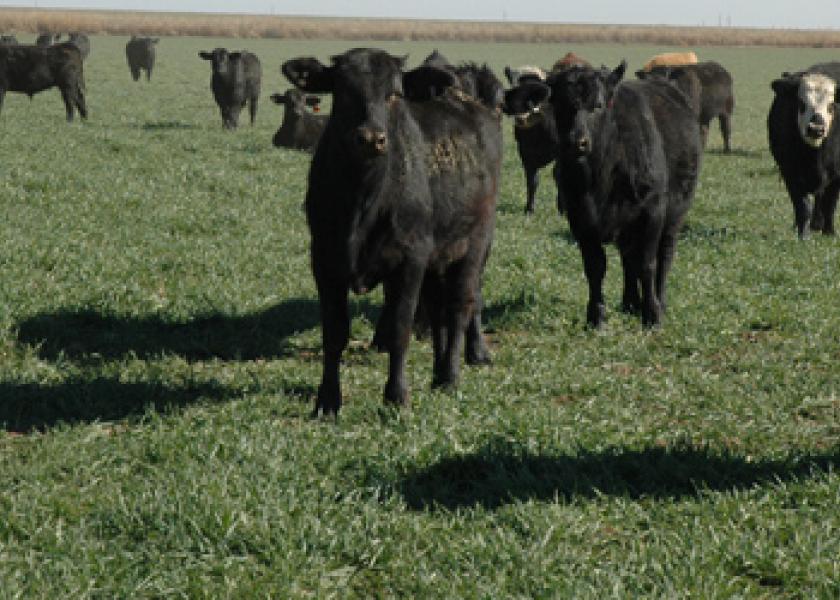More Cattle Grazing Winter Wheat in Oklahoma

In the final crop progress report of 2023 at the end of November, the Oklahoma wheat crop was rated 53 percent good to excellent with 7 percent poor to very poor. This compares to one year ago when the Oklahoma wheat crop was rated 31 percent good to excellent and 24 percent poor to very poor. Figure 1 shows that much of the major wheat belt in western and northwestern Oklahoma have received well above average precipitation in the past two months. The latest Drought Monitor shows that just 3 percent of the state has D2 level drought with no D3 and D4 conditions.

I recently traveled from Southeastern Colorado through the entire length of the Oklahoma Panhandle and the northwest part of the state. The majority of wheat fields looked very good with well-developed wheat stands, with just a few later planted fields with less growth.
Many fields are stocked with grazing cattle, including irrigated fields in the Panhandle and in Southeastern Colorado. The number of stocker cattle grazing winter wheat appears to be significantly larger than last year. In 2022, the estimated January 1 supply of feeder cattle outside of feedlots in Oklahoma (many of which are typically grazing wheat), was down 18.5 percent year over year and the lowest since 2014. Although overall cattle numbers now are less than one year ago, the January 1 feeder supply in Oklahoma may be larger year over year.
It is just an anecdotal observation, but it seemed that the number of stocker heifers on wheat in late December exceeded the number of steers. Although it appeared that cow-calf producers took advantage of strong prices to market both steer and heifer calves last fall, it is possible that decisions about whether stocker heifers on wheat will be feeders or replacements have not yet been made.







